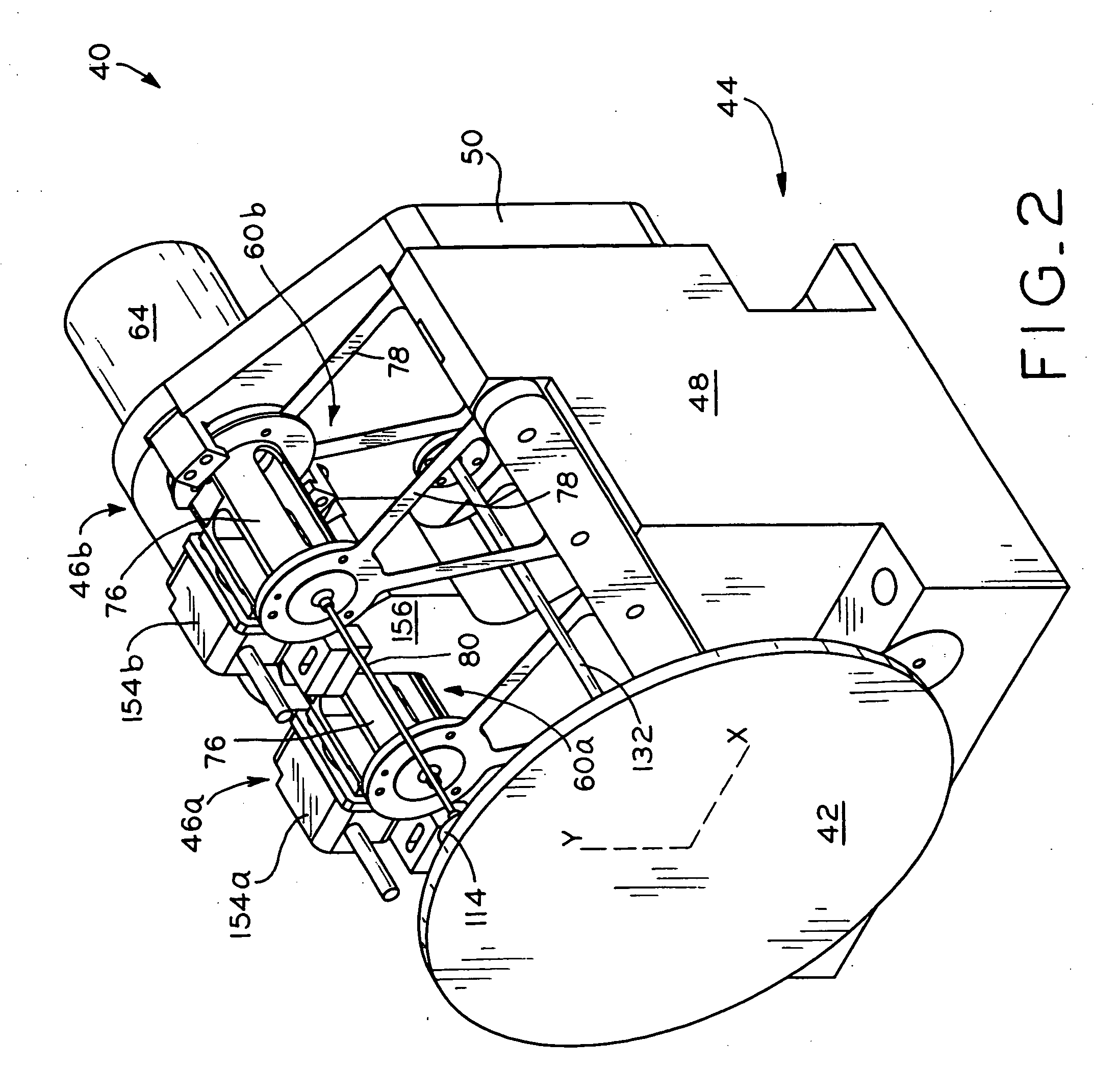Laser cutting system
a laser cutting and laser technology, applied in the field of laser cutting systems, can solve the problems of limiting the speed at which the laser beam can process a substrate material or workpiece, the need for custom-built dies, and the inability to process substrate materials or workpieces at the operational speed of the laser beam, so as to facilitate the substantially frictionless movement of the bobbin assembly and high operational speed
- Summary
- Abstract
- Description
- Claims
- Application Information
AI Technical Summary
Benefits of technology
Problems solved by technology
Method used
Image
Examples
Embodiment Construction
[0030] Referring to FIG. 1, the optical components of laser cutting system 20 are shown. In operation, laser cutting system 20 sweeps a cutting laser beam 22 along a cutting path P over the surface of a sheet of substrate material 24 to cut out individual pieces or articles from the substrate material 24. The optical components of laser cutting system 20 are shown in FIG. 1 in a top view, in which the components of laser cutting system 20 are arranged on a horizontal support surface 26 and the substrate material 24 is disposed vertically. However, the orientation of one or more of the components of laser cutting system 20, as well as the orientation of substrate material 24 may vary as desired; for example, the components of laser cutting system 20 may be arranged vertically, with substrate material 24 arranged horizontally.
[0031] Substrate material 24 may be any type of material which is to be cut, etched, or otherwise processed by laser cutting system 20, such as a sheet of paper...
PUM
| Property | Measurement | Unit |
|---|---|---|
| Responsivity | aaaaa | aaaaa |
Abstract
Description
Claims
Application Information
 Login to View More
Login to View More - R&D
- Intellectual Property
- Life Sciences
- Materials
- Tech Scout
- Unparalleled Data Quality
- Higher Quality Content
- 60% Fewer Hallucinations
Browse by: Latest US Patents, China's latest patents, Technical Efficacy Thesaurus, Application Domain, Technology Topic, Popular Technical Reports.
© 2025 PatSnap. All rights reserved.Legal|Privacy policy|Modern Slavery Act Transparency Statement|Sitemap|About US| Contact US: help@patsnap.com



